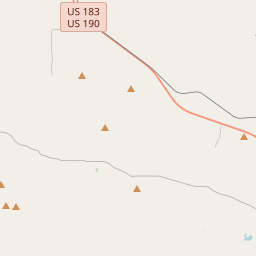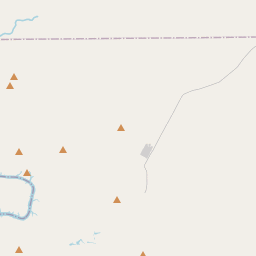Flood, The 1957
Historical marker location:












The 1957 Flood The area around Lampasas drains to the Sulphur Creek basin, and the stream flows across the town from the southwestern edge to the east side, intersecting with Burleson Creek and other branches along the way. Floods have struck the town throughout its history, and notable early ones occurred in 1873, 1936 and 1944. Following the 1944 rise, city officials took measures to address the problem, dredging the creek and constructing earthen levees. Such work, however, failed to prepare the town for what would occur in the next decade. 1957 was a year of heavy rainfall in Texas, following a long period of drought. On May 12 of that year, only two weeks after an earlier rise, sustained downpours in the area caused water to begin collecting along upper reaches of the Sulphur Creek headwaters, and as it quickly joined up with downstream tributaries it began to spill over the banks. Through the night of Mothers Day, May 12, 1957, floodwaters rages through the middle of town, slamming into stores and houses with dramatic force, and washing away cars and other property. Flat tops of buildings around the square became islands of safety for those trapped by the water, and residents fought to save themselves and their families. Tragically, five people died in the incident. Following the devastating flood, the citizens of Lampasas regrouped and rebuilt, and businesses reopened within months. The tremendous loss of life and property caused by the Mothers Day flood of 1957 spurred city officials to action, and new flood control measures soon followed. The 1957 flood thus proved to be a turning point in city planning and development, as well as the history of Lampasas. (2005)
As one of the most visible programs of the Texas Historical Commission (THC), historical markers commemorate diverse topics in Texas history, including: the history and architecture of houses, commercial and public buildings, religious congregations, and military sites; events that changed the course of local and state history; and individuals who have made lasting contributions to the state, community organizations, and businesses.
Texas is also home to the world's largest honky-tonk, Billy Bob's Texas in Fort Worth. The venue covers three acres and can hold up to 6,000 people.
In 1852, Lampasas County was officially established, named after the Lampasas River that runs through the area. The county quickly became a prominent agricultural region, with cotton being the primary crop. The arrival of the Texas and Land Company railroad in 1882 further stimulated the local economy, as it facilitated trade and transportation in the area.
During the late 19th and early 20th centuries, Lampasas County also experienced economic growth due to the discovery of mineral resources. Manganese and zinc mining industries played a significant role in the county's development. Additionally, the city of Lampasas became a popular health resort destination, thanks to the therapeutic value of the local natural springs.
Throughout the years, Lampasas County has faced its fair share of challenges. The region went through difficult times during the Great Depression, with the decline of the agricultural industry. However, the county managed to bounce back and diversify its economy, embracing tourism and other industries. Today, Lampasas County remains a vibrant community with a blend of historical charm and modern development.
Lampasas County Timeline
This timeline provides a concise overview of the key events in the history of Lampasas County, Texas.
- 1854 - Lampasas County is founded and named after the Lampasas River.
- 1872 - The town of Lampasas becomes the county seat.
- 1882 - The Gulf, Colorado and Santa Fe Railway is completed through the county.
- 1885 - The first oil well in central Texas is drilled in Lampasas County.
- 1922 - The Hancock Springs Hotel, a popular health resort, is built.
- 1949 - The Fort Hood military reservation is established, impacting the county's economy.
- 1960s - The construction of the Highland Lakes dams brings tourism and recreation to the area.
- 1990s - The county experiences population growth and increased development.